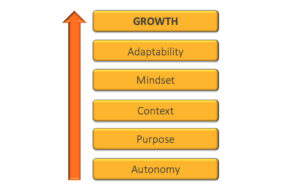As I have written about before and more recently, understanding and leveraging the role of context is at the center of all learning, growth, development, and performance enhancement.
Context gives meaning to content. The specific meaning often has to do with whether context is being used to describe WHAT, WHY, or HOW.
WHAT
Imagine someone asks you, “how long will it take to drive from downtown Los Angeles to Santa Monica?” This is a content based question that requires context, i.e., WHAT time this person plans to drive, to accurately answer this question.
WHY
Imagine someone says, “I am going to drive along the entire coast of California.” This is a content based statement that can become more meaningful by adding a “because” statement that adds context in the form of WHY. For example, “I am going to drive along the entire coast of California BECAUSE I want to explore all the different beaches California has to offer.” Or, “I am going to drive along the entire coast of California BECAUSE I need to drive from San Diego to Oregon, and I can’t afford a plane ticket.”
When I discuss self-regulation, I am often thinking of context in terms of either WHAT or WHY. The self-regulation formula is S x B=R (Situation x Behavior=Result). The situation refers to WHAT and the result refers to WHY. Those two bookends provide the meaning that inform what behavior (HOW), i.e., content, will be most effective to serve the situation, the intended outcome, and the interplay between the two.
HOW
The Conscious Leadership Group talks about “context vs. content” in the context (situation) of HOW information–the content–gets treated. For instance, losing your job is content that is factual, and HOW you relate to that data point(s) is YOUR particular context. You could relate to it as something that happened “TO ME,” i.e., you were at the effect of and powerless over this outcome, or “BY ME,” i.e., you are responsible for this outcome and outcomes in the future.
A “TO ME” state of consciousness is fear based, defensive, and thinks things SHOULD be different. Whereas, a “BY ME” state of consciousness looks at data through the lens of “what can I learn from this?” “How is this situation for me?” and “How am I creating this and keeping it going?” Additionally, “TO ME” often treats content as problematic; whereas, “BY ME” treats content as opportunistic.
As you can see, context can take many forms in order to endow content with meaning that is relative, useful, and purposeful. Becoming more fluent with these three different forms of context, can help you to have more agency and control over your experiences.




